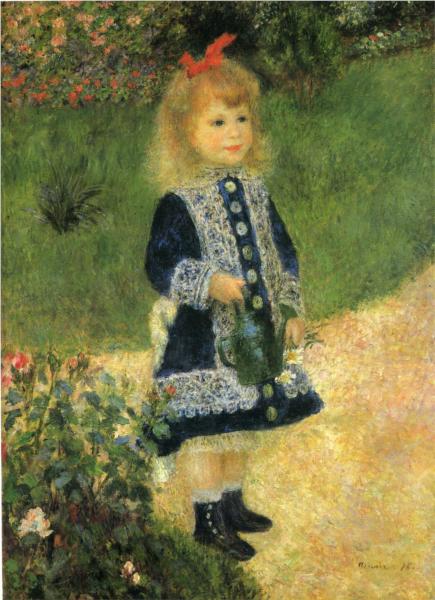
In the domain of acting, the first thing we must do is to make an effort – to try. This is a necessary predicate to higher levels of function such as being responsible, reliable and innovative.
- . . . the doing is the point . . . [From Sally Brampton, Shoot the Damn Dog, p. 249.]
No one ever accomplished anything without making an effort. Trying is the rudimentary first step toward attaining any level of skill. People suffering from depression struggle most notably with making this first step.
Real
True Narratives
The inclusion of narratives about the first steps out of depression is not meant as an affront to depression sufferers or as a suggestion that such a person needs only to "pick up his bed and walk." Like all the stories on this forum, the stories of people who have overcome depression offer an important lesson for everyone.
- Wendy Aron, Hide and Seek: How I Laughed at Depression, Conquered My Fears and Found Happiness (Kunati, 2008).
- Sally Brampton, Shoot the Damn Dog: A Memoir of Depression (W. W. Norton & Company), 2008.
- James Bailey, Man, Interrupted (Open Book Press, 2005).
- Elyn R. Saks, The Center Cannot Hold: My Journey Through Madness (Hyperion, 2007).
- David A. Karp, Speaking of Sadness: Depression, Disconnection and the Meanings of Illness (Oxford University Press, 1997).
- Neil Casey, Unholy Ghost: Writers on Depression (William Morrow, 2001).
Technical and Analytical Readings
- Mark Williams, John Teasdale, Zindel Segal and Jon Kabat-Zinn, The Mindful Way Through Depression: Freeing Yourself From Chronic Unhappiness (The Guilford Press, 2007).
Photographs
Documentary and Educational Films
Imaginary
Fictional Narratives
"And a certain man was there, which had an infirmity thirty and eight years. When Jesus saw him lie, and knew that he had been now a long time in that case, he saith unto him, Wilt thou be made whole? The impotent man answered him, Sir, I have no man, when the water is troubled, to put me into the pool: but while I am coming, another steppeth down before me. Jesus saith unto him, Rise, take up thy bed, and walk. And immediately the man was made whole, and took up his bed, and walked . . ." [The Bible, John 5:5-9.]
Poetry
Poems:
· Robert Frost, “Out, Out”
From the dark side:
· John Keats, “Ode On Indolence”
Music: Composers, artists, and major works
With their simple compositional forms and techniques, Luigi Boccherini’s symphonies illustrate the sound and feeling of an early effort. The symphonies include 6 symphonies, Op. 12, G. 503-508 (1771) (approx. 140’), 6 symphonies, Op. 21, G. 493-498 (1775), 6 symphonies, Op. 35, G. 509-514 (1782) (approx. 93’), 4 symphonies, Op. 37, G. 515-518 (1786-1787), and other singly-grouped symphonies. Johannes Goritzki & German Chamber Academy have recorded all of Boccherini’s symphonies.
Giovanni Battista Pergolesi, L’Olimpiade, P. 145 (1735) (approx. 180’) (libretto), is about striving, and how our lives turn on our successes and failures. “Megacles, Aristea's lover, agrees to fight under the name of his friend Lisidas in the Olympic Games where she is the prize, without his knowledge. The librettist portrays the traditional conflict between love and friendship . . .” In addition to the audio-recorded performances linked above, here is a link to a video-recorded performance conducted by de Marchi.
Other Renaissance- and Baroque-era works characterized by their simplicity of composition – beginning efforts of a sort:
- Ottavio Bariola, Ricercare for Organ, “are important as early examples of keyboard pieces that move away from monothematic models to use of multiple themes, including contrasting ideas set in canons.” (1585) (approx. 61’)
- Lodovico Giustini, 12 Sonate da cimbalo di piano e forte detto volgarmente di martelletti (12 keyboard sonatas), Op. 1 (1732) (approx. 160-180’)
- Antoine Forqueray, Pièces de Clavecin (Six Suites) (1747) (approx. 150’)
- Antonio Soler, Harpsichord Sonatas (mid-1700s) (thirteen volumes on CD)
- Gaetano Pugnani, Overtures in Eight Parts (late 1700s) (approx. 65’)
Other works:
- Mieczysław Weinberg, String Quartet No. 6 in E Minor, Op. 35 (1946) (approx. 34’)
- William Susman, Quiet Rhythms, Book I (2010) (approx. 51’); Quiet Rhythms, Book II (2010); Quiet Rhythms, Book III (2012); Quiet Rhythms, Book IV (2013): these are sets of minimalist prologues and actions for solo piano. Asked how he worked, Susman responded: “Slowly. Sometimes at the piano, sometimes with a pencil and paper, sometimes at my computer, writing directly into music notation software or a sequencer. It depends on the project.”
- Jean Catoire’s minimalist solo piano works also capture the essence of making a beginning effort. Nicolas Horvath has championed them, with Vol. 1 (220’), Vol. 2 (220’), Vol. 3 (232’), Vol. 4 (206’), Vol. 5 (181’), Vol. 6 (289’), Vol. 7 (305’), and Vol. 8 (253’).
Albums:
- Michael Dease, “Give It All You Got” (2021) (58’): the album title expresses a level of effort beyond merely trying but the underlying idea is the same.
Music: songs and other short pieces
- P!nk, “Try” (lyrics)
- Shakira, “Try Everything” (lyrics)
Visual Arts
- Norman Rockwell, Back to School (September 1919)
- Norman Rockwell, Off to School (September 1920)
- Harold N. Anderson, Children Heading Off to School
- Vasily Perov, Amateur (1862)
- Pierre-Auguste Renoir, Country Footpath in the Summer (1874)
Film and Stage
Jim Jarmusch makes darkly comic films about people who were down and out. At least they were trying to get on their feet.
- Stranger Than Paradise, about a few offbeat men “who take a lot to get excited”; visually, as with his characters, Jarmusch points out the “ludicrously sublime in the supremely tacky”
- Down By Law, about three prison escapees
Other films:
- Oslo, August 31st: a man in a drug rehabilitation program is released for a day to seek work but is beset by his inclination to drift